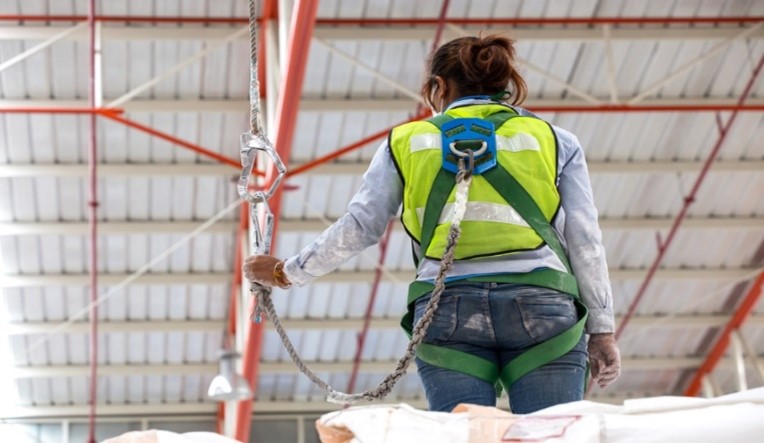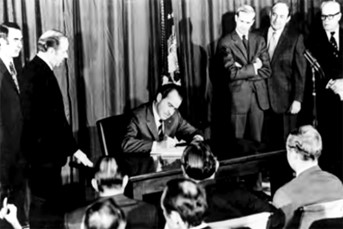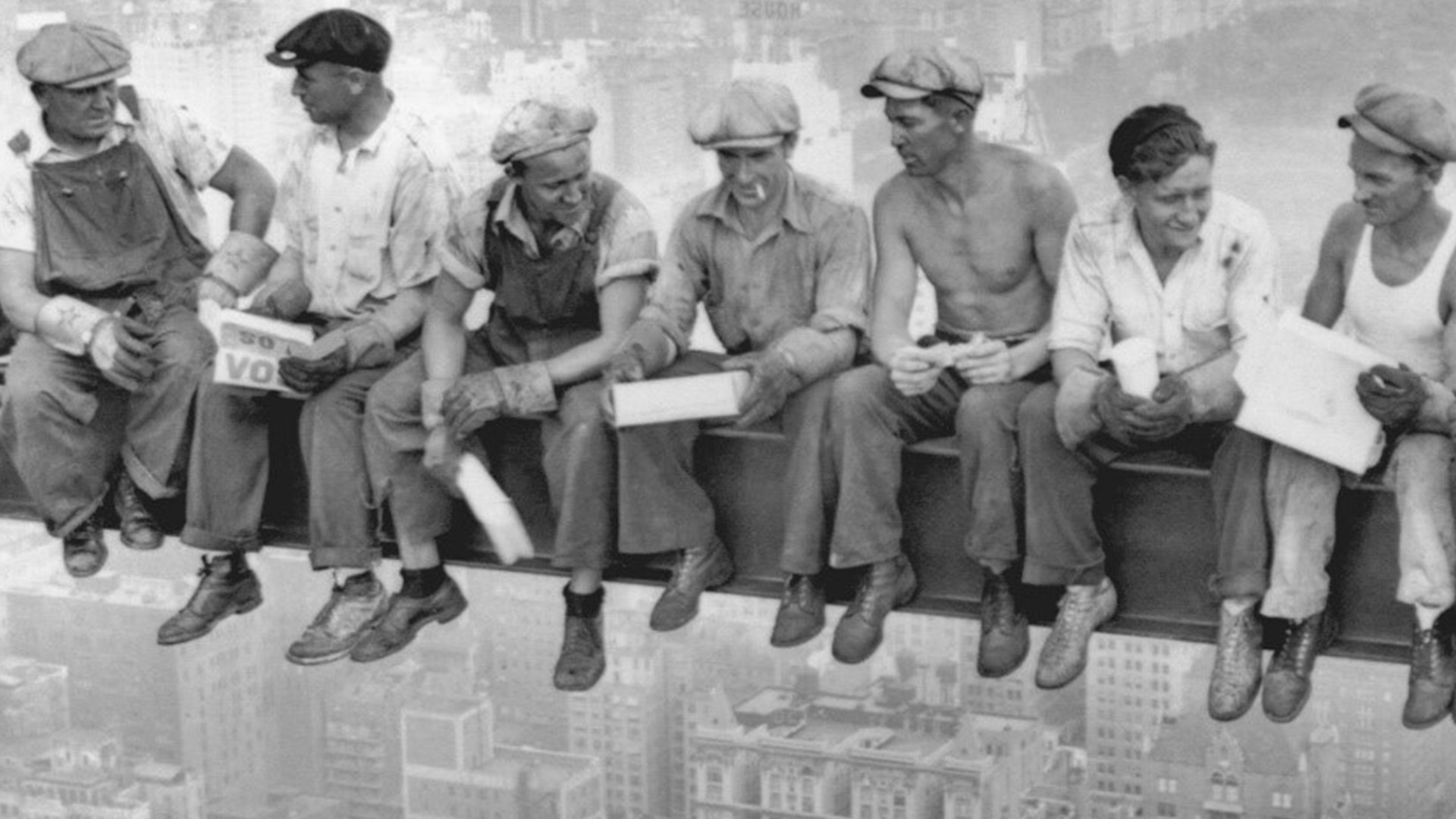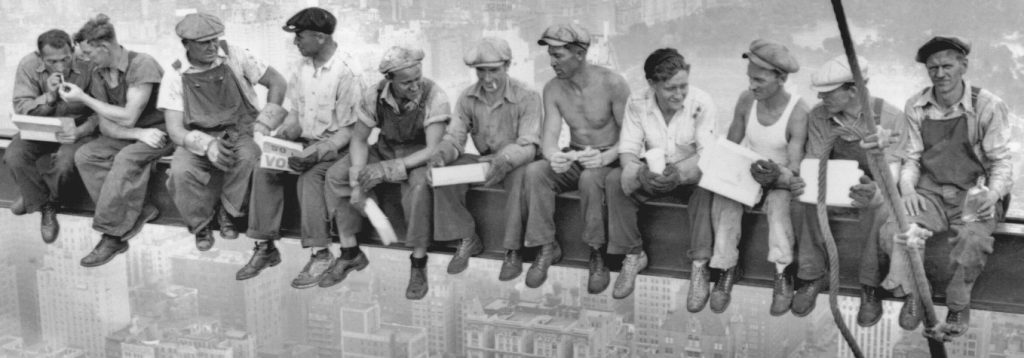Let’s face it, people have been slipping, tripping, and falling since the dawn of time; but when it happens in the workplace, employees need more than being told to just ‘shake it off’.
Picture this: a construction site in the early 1900s, where workers teetered on steel beams without so much as a safety harness. Fast forward to today, and you’ll find a workplace transformed by regulations, innovations, and a dash of common sense.
It’s true that the early days of industrial America were often reckless, but as history has shown, you can’t stand in the way of progress. So, let’s explore the ever-evolving safety tango between employers, employees, and society at large.
The Wild West of Workplace Safety
The era of the American Industrial Revolution was a perilous place for workers. Factories were filled with unguarded machines and skyscrapers were built by men balancing on steel beams without any fall protection. It was a time when the phrase “safety first” was more of a suggestion than a rule. Employers were more concerned with output than the wellbeing of their workers, and the idea of fall protection was as foreign as a smartphone.
The Birth of Regulation
Things began to change in the late 19th century, with Massachusetts implementing the first safety and health legislation in 1877. This law required safety precautions like guards on machines and adequate fire exits. Other states followed suit, and by 1911, worker’s compensation laws were established, providing injured workers with recompense and reducing the need for litigation.

In 1913 the National Safety Council was founded, providing hope in the muddy waters of workplace safety. The council collected data and developed programs to prevent accidents, marking the beginning of a more systematic approach to safety. One example of the positive effect these regulations had on workplace safety is the construction of the iconic Golden Gate Bridge in the 1930s. Due to significant advancements in safety practices, safety nets were used, which saved the lives of 19 workers who became known as the “Halfway to Hell Club.”
OSHA: The Game Changer
The real turning point came in 1970 with the establishment of the Occupational Safety and Health Administration (OSHA). OSHA’s mission was clear: to ensure safe and healthy working conditions by setting and enforcing standards. The enforcement arm of OSHA was like a superhero to workers. OSHA’s power to conduct unannounced inspections motivated employers to take safety more seriously, or they would face hefty fines and increased litigation costs.
In 1994, OSHA introduced the Fall Protection Standard, which required fall protection for workers such as guardrails, safety nets, and personal fall arrest systems, at heights of six feet or more. The introduction of this standard was a significant milestone in the history of fall protection, marking a shift from reactive to proactive safety measures.

The Role of Training & Awareness
It is important to note that safety is not just reserved for construction sites, a slip and fall at the office can just as easily lead to a broken arm. Despite all the advancements in safety equipment and regulations, the human element still remains – in all work environments. It is up to employers to foster a culture of safety, where employees are not just aware of the risks but are also empowered to take action. This can only be achieved through training and leading by example.
Comprehensive training programs can be difficult and time consuming to create, and there aren’t a lot of options out there for materials.
We at CrewSafe recognized this need and developed our Off The Wall® Safety Awareness Poster Program. It uses eye-catching graphics to drive home important safety messages to employees. And it should be no surprise that our first topic – back in 1992 – focused on slip, trip, and fall prevention!

The journey of slip, trip, and fall prevention in the workplace is a testament to human ingenuity and resilience. From the Industrial Revolution, to the dawn of OSHA, to the safety equipment of today, we have come a long way. But the story doesn’t end here. As technology continues to evolve, so will our approach to workplace safety. Imagine a construction site where workers are equipped with VR headsets, practicing tasks in a virtual environment before stepping onto the actual site. Or consider a smart helmet that can detect a potential slip hazard and alert the worker to exercise caution.
So, whatever work environment you work in, remember to embrace a culture of safety and awareness. To learn more about our Off The Wall Safety Awareness Poster Program and how it can reduce safety incidents and costs by up to 40%, click here.
Sources
- Tractel. (n.d.). The History of Fall Safety & Fall Protection Equipment. Retrieved from https://www.tractel.com/safetygate/history-of-fall-safety-fall-protection-equipment/
- Red Cross First Aid Training. (n.d.). Why slips, trips and falls are so common in the workplace. Retrieved from https://www.redcrossfirstaidtraining.co.uk/first-aid-blogs/why-slips-trips-and-falls-are-so-common-in-the-workplace/
- Edge Fall Protection. (n.d.). History of Fall Protection | Construction Safety History. Retrieved from https://edgefallprotection.com/history-of-fall-protection/
- National Floor Safety Institute. (n.d.). Slip and Fall Quick Facts. Retrieved from https://nfsi.org/nfsi-research/quick-facts/
- Wikimedia Commons. Images. https://commons.wikimedia.org/wiki/Main_Page


